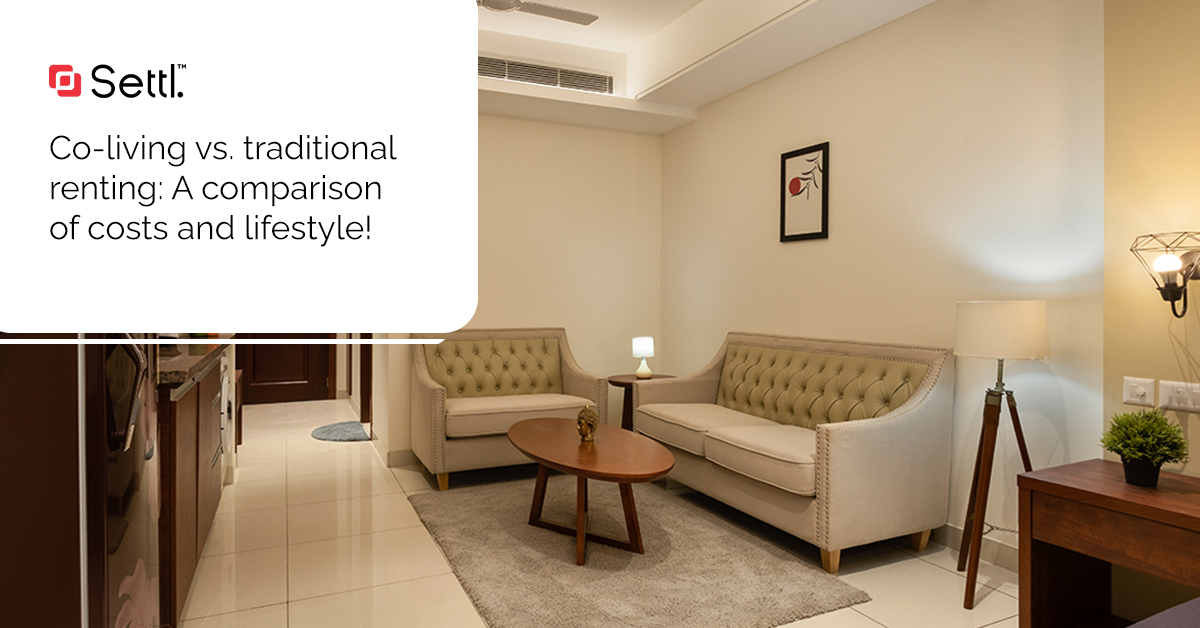Introduction
The housing market has changed dramatically over time, with new options developing to meet the shifting requirements and tastes of people looking for housing. Co-living and conventional renting are two well-liked options. The expenses and lifestyles of these two solutions will be contrasted in this essay.
Cost contrast
1. Rental Charges :
Leasing an entire flat or home is the norm in traditional renting, which entails tenants paying the full cost of rent, utilities, and maintenance. In contrast, co-living offers a shared living arrangement in which residents rent private bedrooms inside of a bigger home, but shared communal areas are available. For residents of co-living arrangements, this arrangement frequently means lower renting costs.
2. Utility Bills :
In conventional rentals, all utility costs—including those for power, water, internet, and other services—are the responsibility of the tenants. In contrast, co-living places typically split tenants’ utility expenditures, lowering individual costs. Co-living situations can benefit greatly from shared utility costs.
3. Furnishing and Appliances :
Typically, tenants who rent traditional apartments must furnish and equip the entire unit themselves, incurring additional fees. Contrarily, co-living spaces are frequently completely furnished and furnished with all essential appliances. Residents no longer need to purchase furnishings and appliances, cutting down on upfront costs.
4. Maintenance and Repairs:
Traditional tenants are responsible for maintaining and repairing their rented space, which may result in additional costs for maintenance and repairs. In co-living places, maintenance is typically handled by a specialised staff or management team, relieving residents of these responsibilities and unplanned costs.
Lifestyle Comparison
1. Community and Social Interaction :
Co-living spaces are intended to generate a sense of community and to promote social interaction among their occupants. Co-living tenants have greater opportunity to interact with others because to shared common areas including living rooms, kitchens, and recreational areas, which promote new friendships and support networks. Traditional rentals may not give the same level of built-in community while yet affording privacy.
2. Flexibility :
Long-term lease agreements are common in traditional rentals, committing renters to a single place for a lengthy period of time. Co-living arrangements, on the other hand, frequently have flexible lease periods that let tenants pay rent on a monthly or even weekly basis. People who wish to be free to move or alter their living circumstances more regularly will benefit from this flexibility.
3. Amenities and Services :
Co-living spaces frequently offer extra amenities and services, like gyms, laundry facilities, cleaning services, and social gatherings. These services improve quality of life and give convenience to inhabitants. Depending on the particular property, facilities for traditional rentals may change.
4. Privacy :
Renters who live in their own distinct spaces have a higher degree of privacy while renting traditional housing. Contrarily, co-living implies sharing facilities and communal areas, which may reduce personal privacy. Co-living facilities, on the other hand, frequently create a balance by providing private bedrooms or specific areas where people can withdraw for quiet.
Conclusion
It is clear from a comparison between co-living and regular renting that each has advantages and factors to take into account. Co-living is often more economical, has a built-in community, is flexible, and comes with extra amenities, making it desirable to people looking for a sociable and affordable way to live. On the other hand, traditional renting offers greater privacy and the capacity to keep total control over one’s living area.
The decision between co-living and conventional renting ultimately comes down to personal preferences, financial situation, and lifestyle objectives. In order to make an informed choice that is consistent with their ideal living situation, it is crucial for prospective tenants to carefully assess their needs and weigh the advantages and disadvantages of each alternative.







No Comments